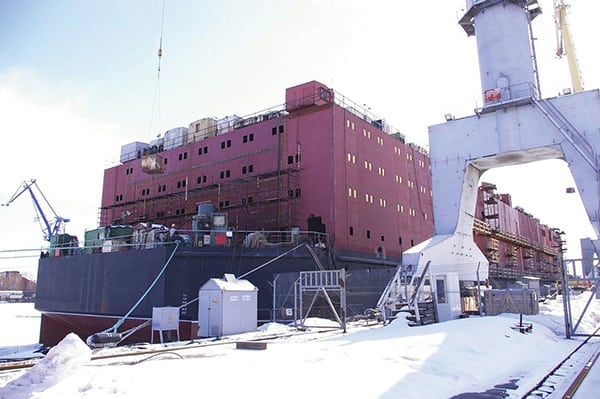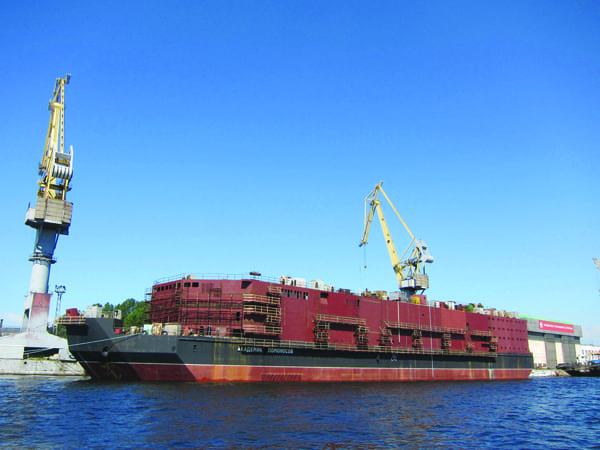Costs for the Akademik Lomonosov, Russia’s flagship floating nuclear power plant, have reportedly mushroomed to 37 billion rubles ($700 million), an increase of more than 300% from the original 2006 estimate of nine billion rubles ($170 million).
The project has also been plagued by delays owing to a shipyard switch. Originally slated for delivery in 2010, state nuclear reactor monopoly Rosatom now plans to operate the world’s first floating nuclear power plant at the port of Pevek in Russia’s remote far east region of Chukotka by October 2016, Deputy Prime Minister Dmitry Rogozin said in May.
A May-released government budget document meanwhile reveals that Russia is pushing to complete the floating power plant to “guarantee energy and social stability” of Chukotka by 2019, and that the project will get federal funds to complete it. The cost increases include those for infrastructure needed in Pevek.
The project comprises two 35-MW reactors (with a 40-year lifetime) built atop a 144-meter barge that must be towed to its destination (Figure 3). It can operate in shallow waters and be connected to onshore infrastructure, making it useful to power ports, industrial infrastructure, oil and gas platforms, and to help with Arctic exploration, Rogozin said.
 |
| 3. Flagship. The Akademik Lomonosov is a floating nuclear power plant that Russia’s Rosatom is building at the Baltiysky shipyard in St. Petersburg. Courtesy: Rosatom |
Russia plans to build seven more such floating power plants. Fifteen countries are reportedly interested in leasing them, most significantly China.
—Sonal Patel, associate editor









